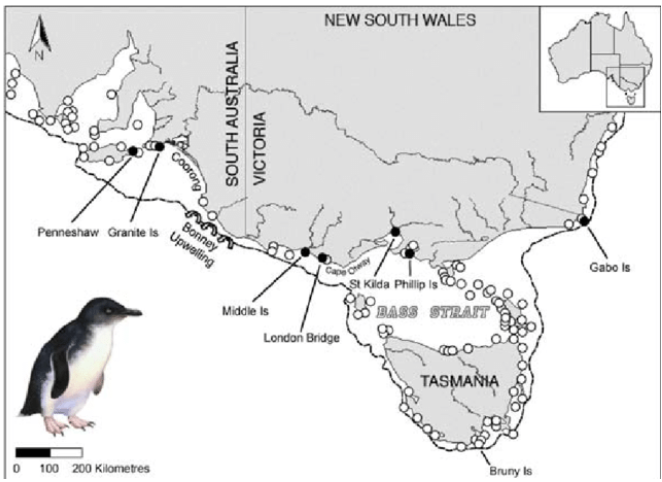Map of Penguin Colonies in Australia


Marcus Rodriguez
Historical Geography Expert
Marcus Rodriguez specializes in historical cartography and geographic data analysis. With a background in both history and geography, he brings unique...
Geographic Analysis
What This Map Shows
This map displays the locations of various penguin colonies across Australia, highlighting their distribution along the coastline of this vast continent. It provides a clear visual representation of where different species of penguins, particularly the Little Penguin, can be found. The map not only pinpoints these colonies but also gives insight into the habitats and environmental conditions that support these adorable marine birds.
Deep Dive into Penguin Colonies in Australia
Penguins are fascinating creatures, and Australia hosts a significant population of them, particularly the Little Penguin (Eudyptula minor). This species is the smallest of all penguins and is unique to Australia and New Zealand. Ever wondered why these colonies are situated where they are? It primarily comes down to their need for specific environmental conditions and food sources.
Little Penguins thrive in coastal environments with abundant fish and other marine life, which serve as their primary food sources. These colonies are often found on islands and coastal areas that provide both shelter and proximity to feeding grounds. For example, Phillip Island in Victoria is renowned for its large Little Penguin colony, attracting tourists eager to witness their nightly return from foraging. Interestingly, this location is not just popular for its penguins; it is also a prime site for scientific research, focusing on the ecology of these birds and the conservation efforts needed to protect them.
In addition to Phillip Island, other notable colonies can be found on the Tasman Peninsula in Tasmania and several locations along South Australia’s coast. The presence of these colonies can be affected by various factors, including habitat loss, climate change, and human activity. For instance, urban development along coastal areas can encroach on their habitats, leading to challenges for these penguins as they seek safe nesting sites. Current estimates suggest that the Little Penguin populations are declining in certain areas, prompting conservationists to take action.
What's fascinating is that penguins are highly social animals. They form large colonies that can number in the thousands, providing protection from predators and a community for raising their young. Each penguin has its own unique call, allowing mates to recognize each other amid the cacophony of the colony. The breeding season typically occurs during the warmer months, from late spring to early summer, when food is most plentiful.
Regional Analysis
When examining the map closely, we can identify several key regions where penguin colonies are most populous. In Victoria, for example, the Little Penguins on Phillip Island are part of a larger marine reserve that helps protect them from overfishing and habitat degradation. In contrast, colonies on the Tasman Peninsula face different challenges, including increased tourism and the impacts of climate change.
In South Australia, the Kangaroo Island colony has been a focus of conservation efforts, especially after the devastating bushfires in early 2020. These fires significantly impacted habitats, leading to concerns about penguin survival rates. Interestingly, this region offers a case study in resilience, with ongoing efforts to rehabilitate habitats and monitor penguin populations post-fire.
Comparing these regions reveals significant variations in colony sizes and health. For instance, while Phillip Island boasts a thriving community, some smaller colonies face existential threats due to environmental changes. The differences in habitat protection policies among states also play a crucial role in the survival of these penguin populations.
Significance and Impact
Understanding the distribution of penguin colonies in Australia is not just about appreciating these quirky birds; it has broader implications for marine ecology and conservation. Penguins serve as indicators of ocean health. Changes in their populations can signal shifts in marine ecosystems due to overfishing, pollution, or climate change.
Moreover, the conservation efforts surrounding these colonies highlight the importance of protecting coastal habitats. As more people flock to coastal regions for tourism, the pressure on these ecosystems increases. By raising awareness about the significance of penguin colonies and their habitats, we can foster a sense of responsibility towards their conservation. Future projections suggest that with concerted efforts, we can stabilize and perhaps even increase penguin populations, but it will require ongoing commitment from both local communities and government agencies.
In conclusion, this map of penguin colonies in Australia serves as a vital tool for understanding not just where these fascinating birds live, but also the challenges they face and the importance of their conservation in the context of broader environmental health.
Visualization Details
- Published
- September 21, 2025
- Views
- 74
Comments
Loading comments...